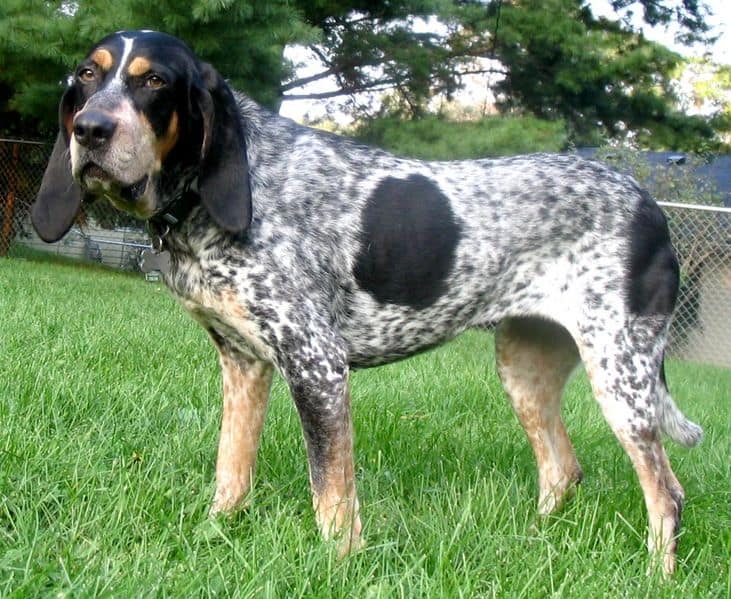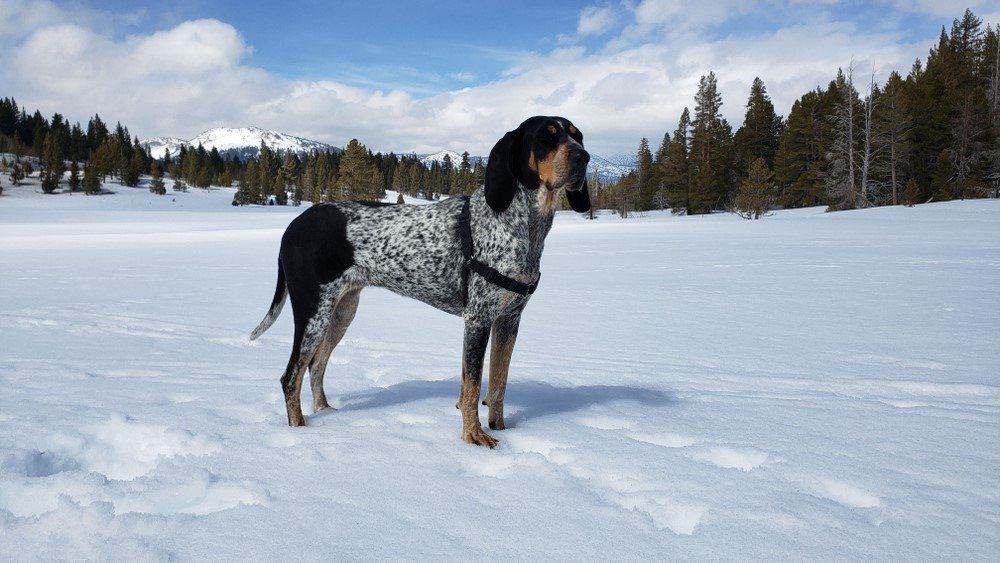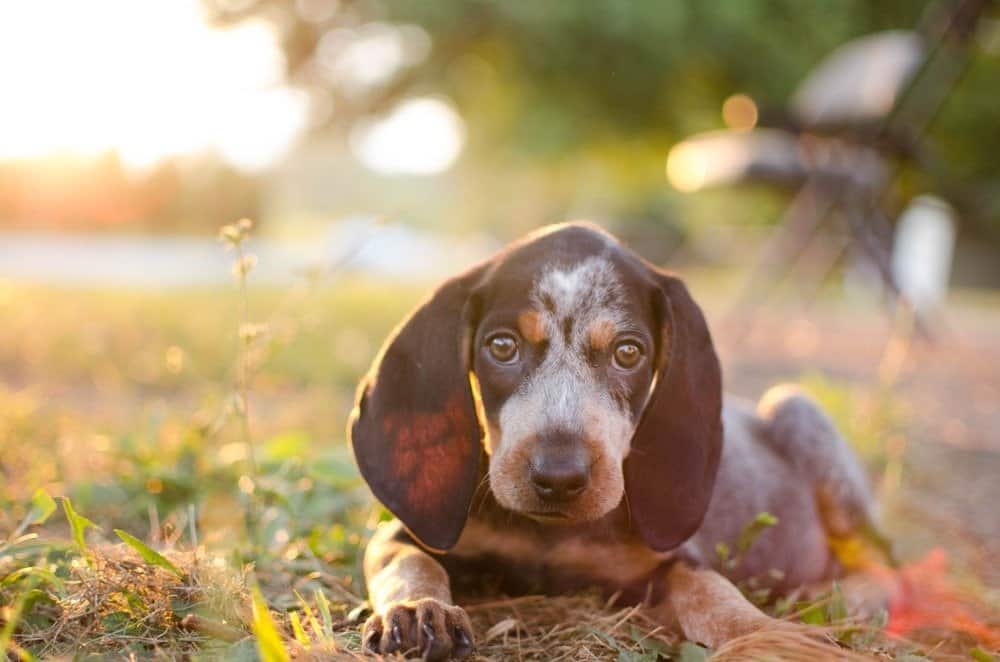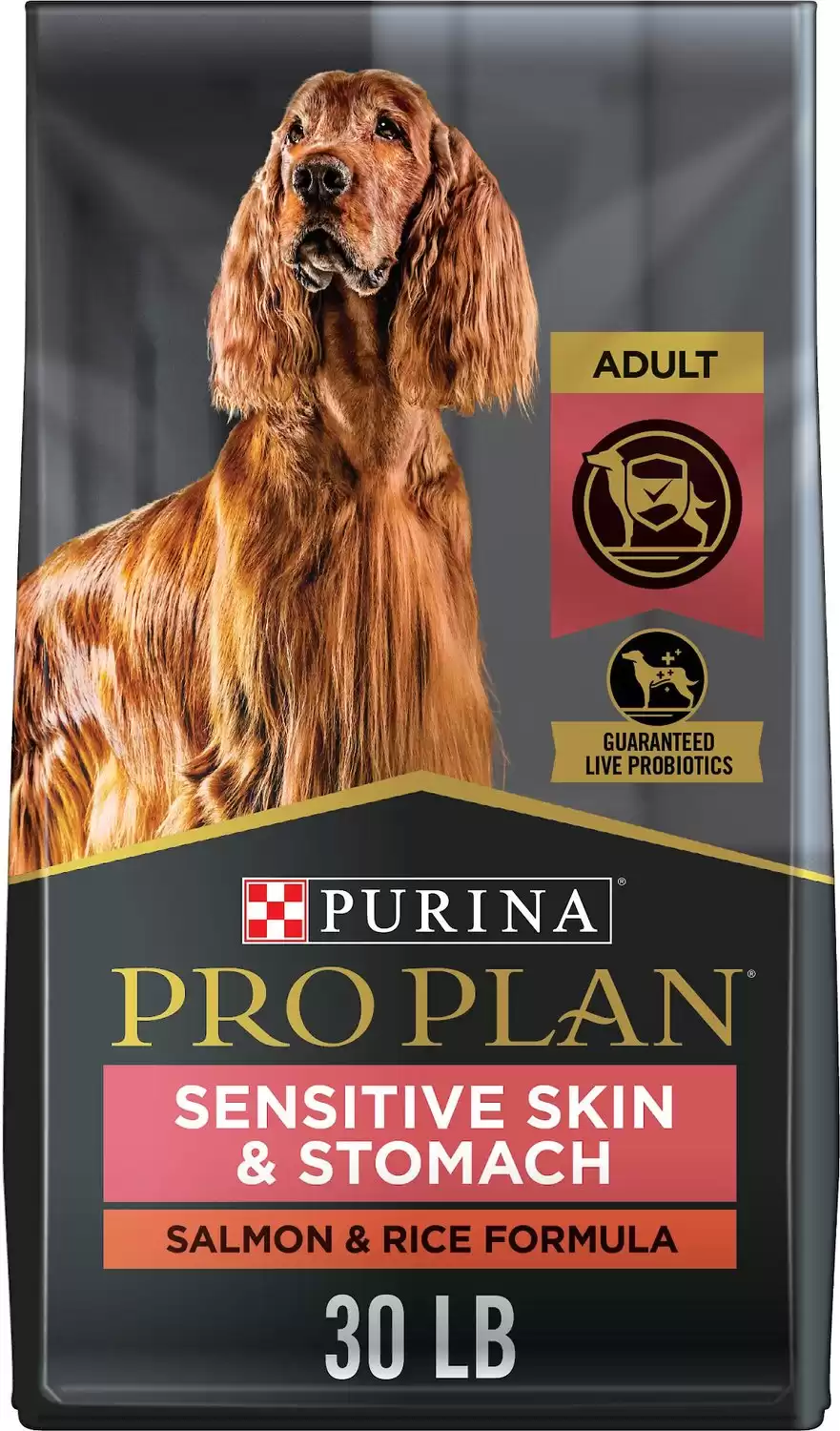Bluetick Coonhound
Canis lupus
When a Bluetick coonhound bays it sounds like it's singing a song.
Advertisement
Bluetick Coonhound Scientific Classification
- Kingdom
- Animalia
- Phylum
- Chordata
- Class
- Mammalia
- Order
- Carnivora
- Family
- Canidae
- Genus
- Canis
- Scientific Name
- Canis lupus
Read our Complete Guide to Classification of Animals.
Bluetick Coonhound Conservation Status
Bluetick Coonhound Facts
- Fun Fact
- When a Bluetick coonhound bays it sounds like it's singing a song.
- Temperament
- Smart and brave
- Training
- Should be trained from an early age due to their large size
- Diet
- Omnivore
- Average Litter Size
- 7
- Common Name
- Bluetick Coonhound
- Slogan
- Has an uncanny knack for problem-solving!
- Group
- Hound
Bluetick Coonhound as a Pet:
- General Health
- Energy Level
- Shedability
- Trainability
- Intelligence
- Tendency to Chew
- Size
- Family and kid friendliness
- Yappiness / Barking
- High
- Separation Anxiety
- High
- Preferred Temperature
- Warm climate
- Exercise Needs
- High
- Friendly With Other Dogs
- Moderate
- Pure bred cost to own
- $1000
- Dog group
- Hound
- Male weight
- 55-80 lbs
- Female weight
- 45-65 lbs
This post may contain affiliate links to our partners like Chewy, Amazon, and others. Purchasing through these helps us further the A-Z Animals mission to educate about the world's species.
View all of the Bluetick Coonhound images!
The Bluetick Coonhound is known as a hunting dog with a ‘cold nose.’ Having a ‘cold nose’ means this dog is able to pick up a scent whether it’s several hours or several days old. They can detect it even after the scent has seemingly gone ‘cold.’
The Bluetick Coonhound has a sweet temperament and an affectionate nature. This makes it a great choice for a family with children. However, when these dogs are tracking down a scent, they don’t let anything get in their way.
See all of our expert product reviews.
The history of these coonhounds began in America. In fact, a relative of the Bluetick Coonhound, called the French staghound, was presented as a gift to George Washington. Bluetick Coonhounds are a mix between the French staghound and the English Foxhound.
Their ability to find and stay with a scent is remarkable. This is why Bluetick Coonhounds aka Blueticks, were used by American frontiersmen to hunt raccoons, boar, cougar, and even bears. The Bluetick belongs to the hound group.
These energetic canines are devoted to their families and love to run around looking for the newest scent in the neighborhood!

3 Pros and Cons of Owning a Bluetick Coonhound
| Pros! | Cons! |
|---|---|
| A playful canine A family looking for a dog that loves to run and play with kids is likely to be happy with a Bluetick Coonhound. | Separation anxiety Bluetick Coonhounds don’t like to be left alone for long periods of time. They can chew up and destroy items in a home due to the stress. |
| Moderate shedding This dog sheds a moderate amount, so it doesn’t leave a lot of hair around the house. | Training may be an issue Though this dog is smart, it can be stubborn during obedience training. |
| A quality guard dog This dog’s bark is impossible to miss. It’s excellent at alerting its owner of someone at the door. | Smaller pets may be at risk Bluetick Coonhounds like to chase smaller animals so it’s necessary to monitor their interaction with other pets. |
History and Origins
Hounds, such as Whippets and Greyhounds, use their sight to locate their prey, while others, like Bluetick Coonhounds and their relatives, rely on an exceptional sense of smell. These scenthounds were bred to track down warm-blooded animals.
The Bluetick Coonhound is a breed of American origin with historical roots said to go back before the founding of the United States. It is believed that the Bluetick is descended from French staghounds that were gifted to George Washington by his close friend, the Marquis de Lafayette. To develop the breed into an efficient hunter, English foxhounds and other hound breeds were crossed in. This resulted in a hardy and detail-oriented hunter with an impressive ability to track scents even after hours or days.
Health and Entertainment for your Bluetick Coonhound
- The Best Wet Food for Senior Dogs
- The Best Dog Food for Labrador Retrievers (Senior, Puppy, and Adult)
- These Are the Best Probiotics for Dogs (They Actually Work)
- Victor Senior Healthy Weight Dog Food Review: Recalls, Pros, Cons, and More
- The Best Dog Food for Small Dogs (Puppy, Adult, Senior): Ranked and Reviewed
See all of our expert product reviews.
The Bluetick Coonhound is a breed of dog that was originally used by frontiersmen to hunt raccoons. However, they were often employed as large-game hunters, hunting animals such as wild boar, bear, lynx, and cougar. Fred Gipson, author of “Old Yeller,” wrote about the breed’s remarkable abilities, describing them as having the ability to detect a week-old trail and run it for 30 hours, as well as possessing the courage to tackle any animal.
The Bluetick Coonhound has not experienced many transformations since the time of Gipson. They remain a favorite of coon hunters and are still valued in Southern culture. Since 1953, the Bluetick Coonhound has been the mascot of the University of Tennessee’s athletics program.

Bluetick coonhounds can run very long distances.
©Mary Swift/Shutterstock.com
Size and Weight
A Bluetick is a large dog with a coat of short, shiny hair. A male grows to be 27 inches tall at the withers, while a female Bluetick grows to 25 inches tall. The top weight of a male is 80 pounds, whereas the top weight of a female is 65 pounds. An 8-week-old Bluetick weighs around 10 pounds. These hound dogs are fully grown at 15 to 18 months old.
| Height (Male) | 27 inches tall |
| Height (Female) | 25 inches tall |
| Weight (Male) | 80 pounds, fully grown |
| Weight (Female) | 65 pounds, fully grown |
Common Health Issues
These coonhounds are prone to a few health issues. Hip dysplasia is one of them. This issue is caused when joints don’t develop in the proper way. It causes limping and sometimes permanent lameness. Bloat is another health issue of these dogs. Bloat occurs when the dog’s stomach fills with gas and becomes twisted, cutting off the blood supply to that organ. A distended abdomen and vomiting are signs of bloat. These dogs are also prone to cataracts. Cloudy eyes are a sign of cataracts.
The main health issues of this dog include:
- Hip dysplasia
- Bloat
- Cataracts

Bluetick coonhounds are prone to hip dysplasia.
©mark__graham/Shutterstock.com
Temperament & Behavior
These dogs have friendly personalities. Their tail always seems to be wagging! Loyalty is one of the main traits of this dog. Whether it’s on a run in the woods or napping on the sofa, this dog likes to be with the family. Blueticks are known for their energetic behavior. Chasing a scent down in the woods takes speed!
One of the many facts a family should know about this dog is it has an unmistakable voice. This hunting dog was bred to bark, howl, and bay when tracking down the scent of an animal. So, its natural inclination is to bark. Socialization helps this dog to learn when to bark. On the flip side, its big voice makes for an effective watchdog!

Bluetick Coonhounds are barkers. If you don’t like a loud dog, this isn’t the breed for you.
©Mark Riordan / Public domain, from Wikimedia Commons, the free media repository – License
How to Take Care of a Bluetick Coonhound
Whether an owner chooses an adult hound or a puppy, it’s important to know as many facts as possible about this breed in order to give it the proper care. A good diet, adequate exercise, and a quality grooming routine all contribute to keeping a pet healthy.
The Best Dog Food
An adult dog of this size needs the proper nutrition to stay healthy. Furthermore, Bluetick puppies need the right diet to develop into healthy adults. Consider these nutritional recommendations:
Bluetick Coonhound puppy food: Calcium is essential in a puppy’s diet. Calcium strengthens bones and helps prevent hip dysplasia. Protein contributes to healthy tissue and muscle development. Fat gives puppies energy so they can burn off any excess calories to avoid excess weight. Vitamin A supports healthy vision in puppies, which can prevent cataracts later on in life.
Bluetick Coonhound adult dog food: One of the most important facts to remember is an adult dog needs many of the same nutrients as a puppy but in different amounts. Protein supports continued healthy tissue and muscle growth. This is helpful in avoiding hip dysplasia. A limited amount of carbohydrates in an adult Bluetick’s diet provide this high-energy dog with the fuel to run around. Calcium continues to strengthen bones as this dog grows older. Vitamin E supports the health of organs which can be useful in preventing bloat.
Also, note that this breed, like any other dog prone to bloat, needs its owners to monitor meals carefully to ensure sensible portions and adequate time between exercise and eating.
A-Z Animals thinks the best dog food for Bluetick Coonhounds is Purina Pro Plan Sensitive Skin & Stomach, High Protein Dry Dog Food.
In the ingredients of this salmon recipe, you’ll find additional fish ingredients for joint-sustaining glucosamine, plus vitamin A for the eyes. The inclusion of hearty grains like oats adds fiber to make the food easily digestible alongside tummy-friendly probiotics.
Check Chewy and Amazon for this product.
- Salmon is its primary ingredient
- High in protein
- Enriched with omega-6 and omega-3 fatty acids
- Solid dietary protein and fiber source
Maintenance and Grooming
How much do Bluetick Coonhounds shed? These dogs shed a moderate amount of hair. Brushing a Bluetick once per week can get rid of loose and dead hair.
A grooming glove is an excellent grooming tool to use on a Bluetick. This glove is soft on its skin and coat while removing dead hair. A glove can be used on the dog’s legs and face as well. A soft boar’s hair bristle brush can be used on its short-haired coat to give it some shine. Start brushing this dog at its head and move toward its tail.
The dog’s nails need to be trimmed once per month or so because long nails can interfere with its energetic running and jumping.

Bluetick coonhounds shed a moderate amount of hair. Frequent brushing is required.
©mark__graham/Shutterstock.com
Training
These dogs are intelligent but can be stubborn during obedience training. It’s best to conduct short obedience training sessions with lots of treats and praise for learned lessons. Remember a Bluetick Coonhound is easily distracted by other animals. So, conducting obedience training in a quiet area is a good idea.
A labrador retriever is another big dog breed but is easier to train. This breed is not as easily distracted as the Bluetick.

Bluetick coonhounds are high-energy dogs and make great running companions.
©Lindsay Helms/Shutterstock.com
Exercise
Since the Bluetick Coonhound is an energetic dog, it needs a moderate to a high amount of exercise. An hour of exercise daily is ideal for keeping this breed in a healthy condition.
These dogs love exploring the woods and fields. Of course, an owner should be sure their Bluetick will respond to the call to come back when exercise time is over.
Playing chase with a ball, fetching items, and running around a backyard are all great activities for this dog.
A Bluetick Coonhound is not a good choice for a person who lives in an apartment. In terms of size, this is a large breed of dog. It needs space to move around without bumping into things and people. A home with a spacious, fenced-in yard is a more suitable option for this hunting dog.
Bluetick Coonhound Puppies

©Kiana Skojec/Shutterstock.com
As puppies, Bluetick Coonhounds should get daily exercise in an enclosed area outdoors to build their muscles, stretch their legs and explore the environment for scents.
With Children
This dog has a gentle, friendly temperament that makes it a good match for a family with children. A socialized Bluetick Coonhound is a fun, playful addition to a household with kids of all ages.
Dogs Similar to Bluetick Coonhounds
Other breeds of dogs similar to Bluetick Coonhounds include the American English Coonhound, Bassett Hound, and the Bavarian Mountain Hound.
- American English Coonhound – The American English Coonhound is similar in appearance to the Bluetick and is categorized in the hound group as well. However, an adult male Bluetick Coonhound weighs more than a male American English Coonhound.
- Bassett Hound – Though the Bassett Hound and Bluetick are in the hound group, a Bassett Hound is smaller and shorter. Also, while a Bluetick needs to get out and take a run every day, a Bassett Hound simply requires a walk through the neighborhood.
- Bavarian Mountain Hound – This is another hunting dog that is similar in size and appearance to a Bluetick Coonhound. But the Bavarian Mountain Hound and small children do not mix very well.
Famous Bluetick Coonhounds
There are some notable examples of Bluetick Coonhounds in the entertainment world and other places in our society. Some examples include:
- A Bluetick Coonhound named Smokey is the mascot of the University of Tennessee
- The cartoon character Huckleberry Hound is a Bluetick Coonhound
- Bando in the movie Homeward Bound II was a Bluetick
Popular Names
Some popular names for Bluetick Coonhounds include:
- Tex
- Bruno
- Hercules
- Trapper
- Satin
- Hannah
- Princess
- Lucy
Bluetick Coonhound FAQs (Frequently Asked Questions)
What is a Bluetick Coonhound?
A Bluetick Coonhound is a large hunting dog that was also bred to be a companion to its owner. The ‘Bluetick’ in its name refers to this dog’s mottled or spotted coat.
This is a friendly, gentle dog with an excellent sense of smell, a loyal heart, and lots of energy!
Are Bluetick Coonhounds good pets?
Yes! If a family has a spacious yard where this dog can exercise, the Bluetick is a devoted pet.
How much does it cost to own a Bluetick Coonhound?
The initial cost of a Bluetick Coonhound is approximately $1000.
The veterinary fees for this breed range from $300 to $1000 per year depending on the care needed.
The food bill for this dog runs from $70 to $120. The price depends on the type of food an owner selects.
Are Bluetick Coonhounds good with kids?
Yes, they are good companions for kids.
Are Bluetick Coonhounds aggressive?
These dogs don’t have an aggressive temperament. But any dog can become aggressive if it feels threatened.
Do Bluetick Coonhounds bark a lot?
Yes, they are known to bark and bay as their main form of communication. But this habit can be lessened with socialization.
How long do Bluetick Coonhounds live?
The lifespan of this dog is 11-12 years.
Are Bluetick Coonhounds hard to train?
A stubborn streak can make them a bit difficult to train. But, an owner who uses a mix of patience, treats, and lots of words of praise is going to be able to train their Bluetick Coonhound.
Are Bluetick Coonhounds herbivores, carnivores, or omnivores?
Bluetick Coonhounds are Omnivores, meaning they eat both plants and other animals.
What Kingdom do Bluetick Coonhounds belong to?
Bluetick Coonhounds belong to the Kingdom Animalia.
What class do Bluetick Coonhounds belong to?
Bluetick Coonhounds belong to the class Mammalia.
What phylum to Bluetick Coonhounds belong to?
Bluetick Coonhounds belong to the phylum Chordata.
What family do Bluetick Coonhounds belong to?
Bluetick Coonhounds belong to the family Canidae.
What order do Bluetick Coonhounds belong to?
Bluetick Coonhounds belong to the order Carnivora.
What genus do Bluetick Coonhounds belong to?
Bluetick Coonhounds belong to the genus Canis.
What type of covering do Bluetick Coonhounds have?
Bluetick Coonhounds are covered in Hair.
How many babies do Bluetick Coonhounds have?
The average number of babies a Bluetick Coonhound has is 7.
What is an interesting fact about Bluetick Coonhounds?
Bluetick Coonhounds have an uncanny knack for problem-solving!
What is the scientific name for the Bluetick Coonhound?
The scientific name for the Bluetick Coonhound is Canis lupus.
What's the difference between the Bluetick Hound and the American Blue Gascon Hound?
The Bluetick Hound is smaller than the American Blue Gascon Hound. Additionally, the American Blue Gascon Hound lives a slightly shorter life compared to the Bluetick Hound.
Thank you for reading! Have some feedback for us? Contact the AZ Animals editorial team.
Sources
- American Kennel Club, Available here: https://www.akc.org/dog-breeds/bluetick-coonhound/
- The Spruce Pets, Available here: https://www.thesprucepets.com/bluetick-coonhound-dog-breed-profile-1117911
- Wisdom Panel, Available here: https://www.wisdompanel.com/en-us/breed-library/blue-tick-coonhound


















